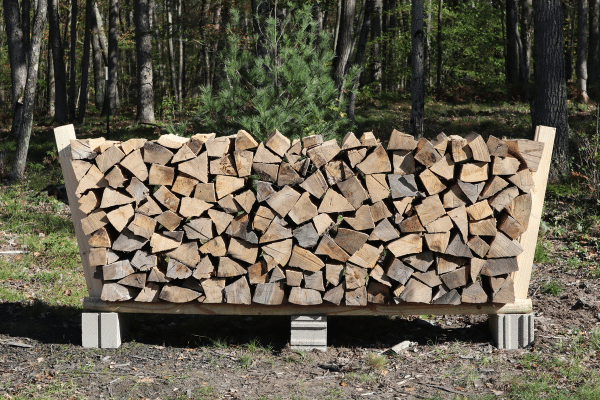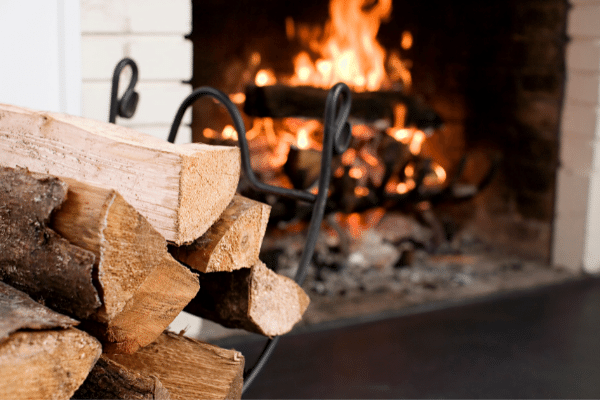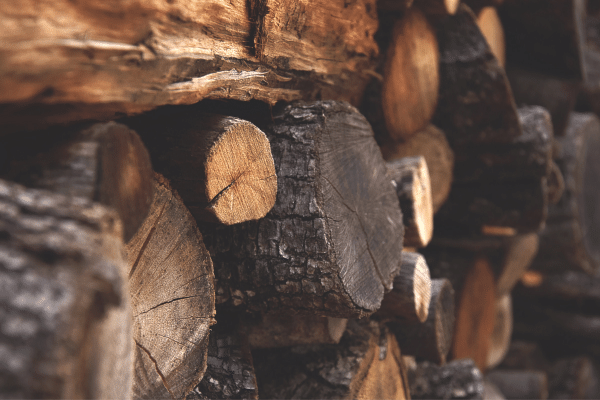- Home
- Types Of Firewood
- Is Cherry Good Firewood
Is Cherry Good Firewood?
This post may contain affiliate links so I earn a commission.
Is cherry good firewood, or should you focus your attention on other popular hardwoods like oak or beech?
The cherry tree could be called a giving tree.
In addition to its ornamental qualities, it also produces beautiful spring blossoms and delicious and nutritious fruits.
The wood of the cherry tree is a favorite among furniture makers and carpenters because of its beauty and density.
Foodies appreciate the pleasant aroma of cherry wood smoke that is used to flavor meats and other food.
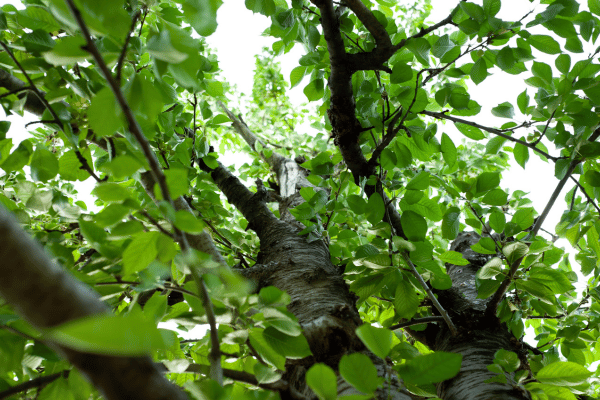
But is cherry good firewood?
For a tree that has so many other things
going for it, could it be that cherry is also an ideal wood to burn as a heat
source?
The short answer to that question is “yes.”
Let’s see why.
Is Cherry Good Firewood To Burn?
Before we see how cherry stacks up as a firewood, let’s think about the criteria by which the quality of firewood is typically judged.
Of course, things vary based on specific use and personal preferences, but the quality of firewood is often assessed based on its hardness and density, moisture content, the amount and aroma of its smoke, its ease of cutting and splitting, average seasoning time, and its BTUs.
Other factors include the availability of a wood variety and its resistance to pest infestations along with its output of soot, ash, and creosote.
A hardwood tree, cherry is often lumped together with other dense woods, like oak and maple.
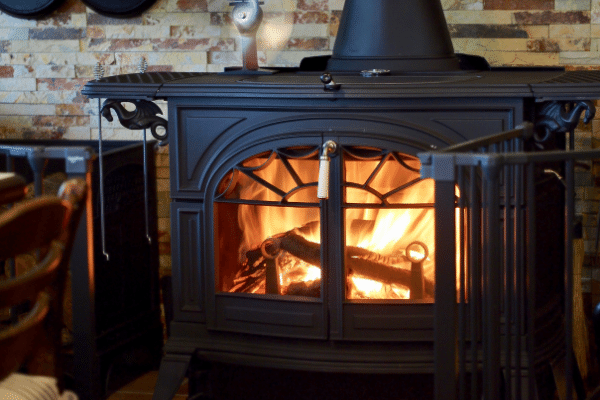
In reality though, cherry wood has a lower heat output, as measured
in BTUs, than other popular hardwoods.
BTUs, or British Thermal Unit, is a unit of measurement to quantify the amount of heat energy.
One BTU represents the amount of heat required to raise the temperature of one pound of water by one degree Fahrenheit.
Cherry wood has a rating of 20.4 million BTUs per cord of wood.
When compared to oak, walnut, ash, and maple – woods with BTU ratings of 26.4, 22.2, 23.6, and 24.0 respectively – cherry has only a moderate heat output.
For a hardwood species, its BTU level is on the low side.
Because of this, cherry is lower on the list of excellent firewood.
How Hard And Dense Is Cherry Firewood?
While cherry wood is not as dense as some hardwoods, like oak or hickory, it still provides a good amount of energy.
Its density allows it to burn for a decent duration and provide sustained heat.
The wood is hard with a smooth, straight grain that makes it bendable, yet strong.
One cord of dry cherry firewood weighs about 2,928 pounds.
Does Cherry Firewood Smell Good?
Many fans of cherry firewood seek out this wood to burn because of its pleasing aroma.
Cherry has a light, fruity smell when it is burned.
Even though the aroma of cherry is not overpoweringly strong, it has staying power.
When you burn cherry wood in your fireplace, you will have a lingering cherry scent that lasts for up to two weeks.
In general, cherry wood smoke does not pose a risk to the people living in your home.
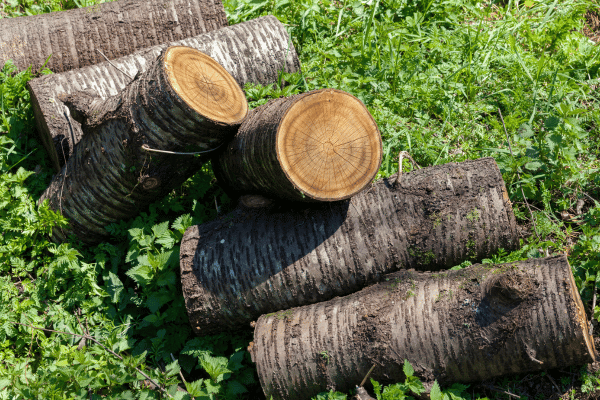
The smoke is not offensive or noxious like some other types of firewood.
Of course, people with asthma or chronic respiratory conditions may be more sensitive to the smoke than others, but most people have no complaints about cherry firewood’s odor.
The appealing smell of cherry firewood makes it a popular choice for smoking meats, fish, and cheeses.
It is also a common scent for incense.
Cherry firewood produces a low amount of smoke when compared to other varieties of firewood.
Like all types of wood, however, cherry firewood will release more smoke if the wood is green and has not been properly seasoned.
When wood with a high moisture content is burned, thick, unpleasant smoke is released.
The wood you burn to heat your home should always be well seasoned and dry.
How To Season Cherry Firewood
To fully dry out, cherry firewood needs to be seasoned for between eight and ten months.
Wood is considered seasoned when its moisture content falls below 20 percent.
If the moisture content is above 20 percent, the wood will give off excess smoke.
In addition, it will be difficult to light and to stay lit.
There are steps you can take to speed up the seasoning process.
Split the logs when you cut the wood and stack the wood with a bit of space between the pieces to allow airflow to hit as much of the surface of the wood as possible.
The woodpile should be facing the wind, yet out of the rain.
Ideally, it should be stacked under an overhang, on a cement slab or wooden palette, and have a tarp loosely draped over it.
Under ideal circumstances, cherry firewood will dry faster than many other hardwoods.
If you want to be sure that your firewood is well seasoned and ready to burn, invest in a quality moisture meter.

This hand-held device, with sensor pins that you push into the wood, will give you a read-out of the moisture content remaining in the wood.
It is a good way to make sure you don’t smoke up your house by trying to burn firewood that is still too green and moist.
Is Cherry Good Firewood To Split?
Cherry wood has a nice, straight grain which makes the wood fairly easy to cut and split.
In fact, cherry can be easily split with an axe or splitting maul without breaking your back.
Consider it a good, cardiovascular workout.
After all, as Henry Ford once said, “Chop your own firewood and it will warm you twice.”
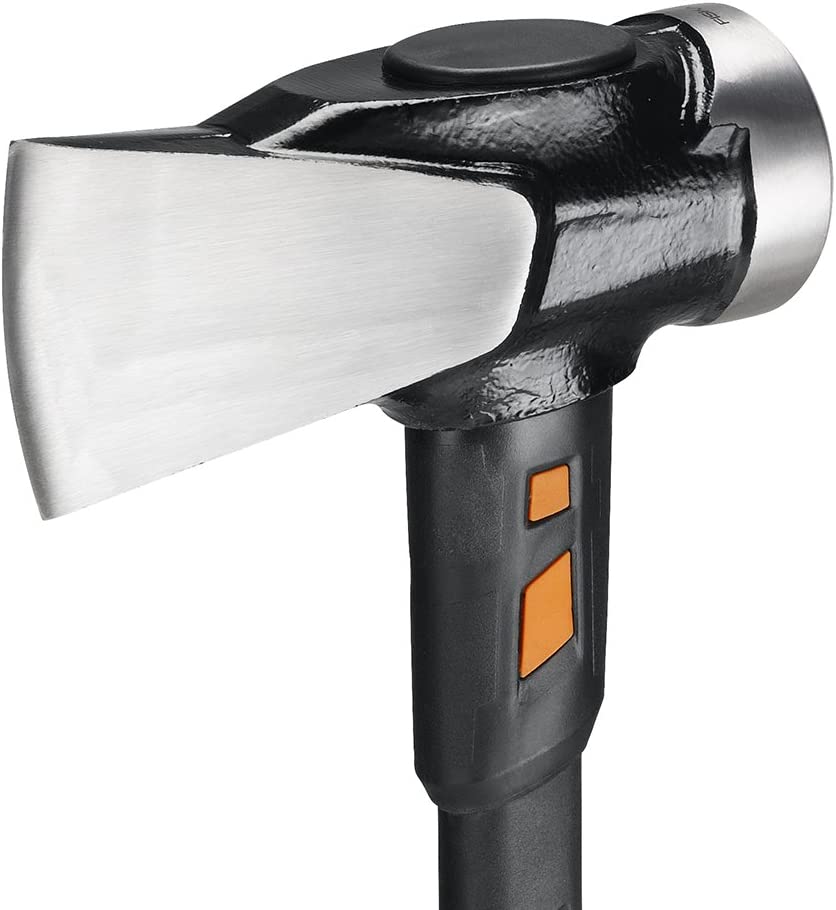
A
word of warning, though.
Some cherry trees that have been used for landscaping and ornamental purposes may be more challenging to chop and split.
Often, these trees are aggressively pruned so the trunks and branches are corkscrewed and twisted.
They could be more difficult to split, requiring a hydraulic log splitter to get the job done.
Coal Production, Ash and Creosote
When burned in a hot fire, cherry is a clean-burning firewood.
It does not produce an abundance of ash and soot.
Cherry, like most hardwoods, has a naturally low sap content, therefore well-seasoned cherry firewood produces low amounts of creosote.
All firewood types will release some amount of creosote, a dark, sticky, tar-like substance that can build up on the walls of your chimney.
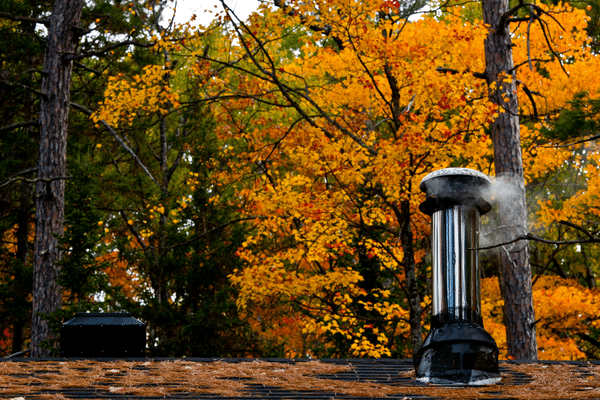
Creosote is highly
flammable and can cause dangerous and devastating chimney fires.
That’s why it is important to have your chimney cleaned and inspected on a regular basis.
Coals produced by burning firewood give a fire its longevity and enable it to heat your home for extended periods of time.
Cherry firewood has a fairly decent coal production, as do most hardwood varieties.
Even after the wood has burned down, the coals will continue to emit heat.
Generally speaking, firewoods with higher BTUs typically have better coal production, however cherry does well in this category, even if its heat output is lower than many other hardwoods.
Insect Resistance
Cherry firewood is dense and durable making it moderately resistant to decay, but it is also an appealing wood for insects.
Perhaps they are attracted to the fruity scent of the wood.
Periodically inspect your stack of cherry firewood during its seasoning time to check for insect infestations.
Hungry bugs can wreak havoc on your supply of firewood.
Does Cherry Produce A Lot Of Sparks?
As a low-sap hardwood, cherry does not throw as many sparks as softer woods, like pines.
However, you can expect to see a few sparks when you burn cherry firewood.
If you are burning the wood in an open fireplace, take precautions to prevent sparks from igniting carpeting or furniture.
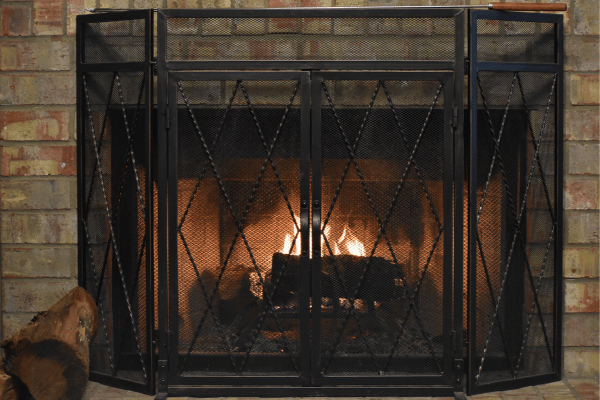
Install a fireplace screen
or metal curtain to curtail errant sparks.
If you heat your home with a wood burning stove or an outdoor wood-burning furnace boiler system, you won’t need to worry about sparking quite as much.
When burning cherry wood in a campfire or backyard bonfire, however, be aware that an unexpected spark may shoot out at any moment.
Keep bare feet and blankets from getting too close to the fire.
Make sure the area around the campfire is clear of dry grass, twigs, and other flammable materials.
Is Cherry Good Firewood - Overall
When we add up all the qualities of cherry firewood, we can safely conclude that, yes, cherry is good firewood.
It has a number of highly desirable traits, including its pleasant aroma, low smoke output, decent coaling properties, ease of splitting, and low creosote output.
In fact, cherry gets high marks in nearly every category except one.…heat output.
As a hardwood species, cherry’s BTU rating is lower than other hardwoods, like maple and oak.
However, cherry firewood’s heat output isn’t bad….it falls in the moderate category.
What it lacks in heat output, it makes up for in other areas, such as its pleasant smell and faster-than-average seasoning time.
In all, we feel that the pros of cherry firewood far outweigh the cons so we can confidently answer the question “Is cherry good firewood?” with a resounding “YES!”
